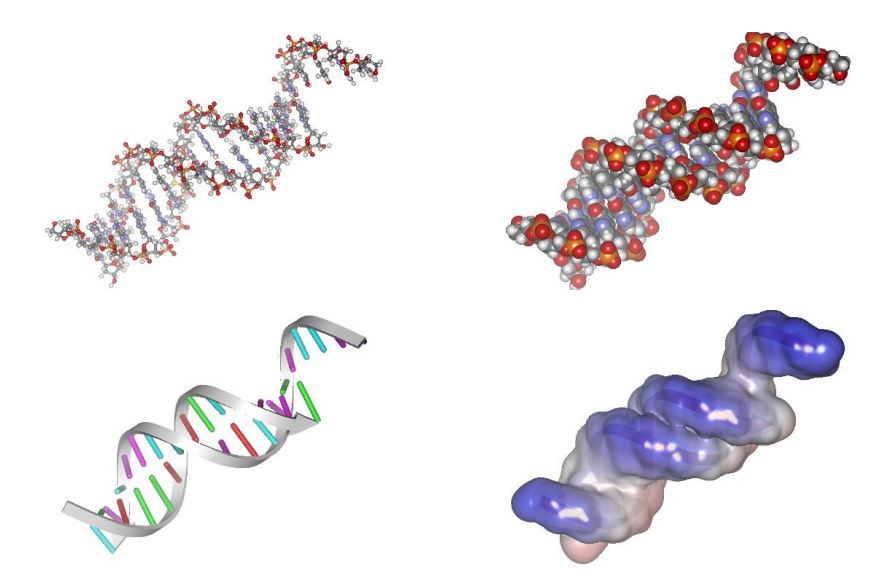The Art of Chemistry– Electronic Visualisation
Understanding chemical structures can be a complicated business. The simplest chemicals are relatively easy to describe and visualise but even moderately large molecules can be fiendishly hard to imagine.

That’s why chemists have become remarkably adept at representing these complex three-dimensional structures on the two-dimensional page or screen. Today, Karl Harrison at the University of Oxford and a couple of buddies take a nostalgic look at the history of visualisation in chemistry.
They begin with a short description of the pencil and paper techniques that were mandatory for chemists in the pre-electronic era. “From the late 1970s to mid 1980s, many science authors became expert using Rotring pens™, plastic templates stencils and Letraset™,” they say.
Consequently, researchers or the illustrators they worked with often became highly skilled at producing complex and beautiful illustrations to go with their papers.
All that changed in the 1980s with the development of the personal computer and chemical visualisation software. Harrison and co highlight in particular a company called Cambridgesoft which was founded in 1986 and produced ChemDraw for the Apple Macintosh.
Visualisation software has advanced in leaps and bounds since then. It’s now routine for chemists to electronically recreate their structures in three-dimensions and in a number of different ways by changing, for example, the way in which atoms and their bonds are represented, the colours involved and even the lighting conditions.
The image above shows a short stretch of DNA represented in four different ways.
Nevertheless, Harrison and co say that producing a high quality image is still a remarkably detailed and time-consuming task that chemists are duty bound to undertake in producing cover images for journals, for example. These can often be works of art in themselves.
What Harrison and co don’t cover is the role that video and animation can play in chemistry. Seeing how molecules fit together can be hugely instructive. It’s not hard to find interesting videos on the web showing common biomolecular activities such as the way DNA works.
But making these videos is still hugely time-consuming and difficult. So it will be interesting to see whether future generations of chemical visualisation software will make this task significantly easier too.
Ref: http://arxiv.org/abs/1307.6360 : Electronic Visualisation in Chemistry: From Alchemy to Art
Keep Reading
Most Popular
Large language models can do jaw-dropping things. But nobody knows exactly why.
And that's a problem. Figuring it out is one of the biggest scientific puzzles of our time and a crucial step towards controlling more powerful future models.
How scientists traced a mysterious covid case back to six toilets
When wastewater surveillance turns into a hunt for a single infected individual, the ethics get tricky.
The problem with plug-in hybrids? Their drivers.
Plug-in hybrids are often sold as a transition to EVs, but new data from Europe shows we’re still underestimating the emissions they produce.
Stay connected
Get the latest updates from
MIT Technology Review
Discover special offers, top stories, upcoming events, and more.